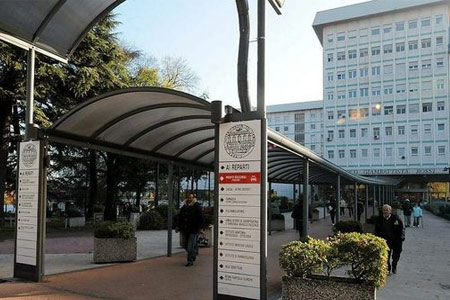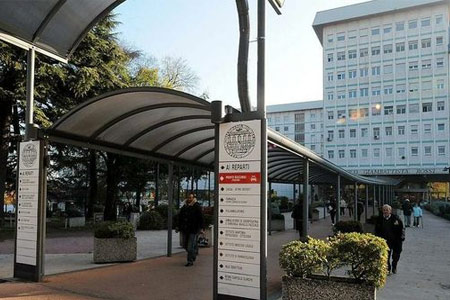- Authors:
-
Licari, Leslie Claire; Bologna, Eugenio; Manfredi, Celeste; Franco, Antonio; Ditonno, Francesco; De Nunzio, Cosimo; Antonelli, Alessandro; Simone, Giuseppe; De Sio, Marco; Cindolo, Luca; Olweny, Ephrem O; Cherullo, Edward E; Leonardo, Costantino; Autorino, Riccardo
- Title:
-
Incidence and management of BPH surgery-related urethral stricture: results from a large U.S. database
- Year:
-
2024
- Type of item:
-
Articolo in Rivista
- Tipologia ANVUR:
- Articolo su rivista
- Language:
-
Inglese
- Referee:
-
No
- Name of journal:
- PROSTATE CANCER AND PROSTATIC DISEASES
- ISSN of journal:
- 1365-7852
- N° Volume:
-
27
- Number or Folder:
-
3
- :
- -LONDON:NATURE PUBLISHING GROUP. -Basingstoke: Stockton Press.
- Page numbers:
-
1-5
- Keyword:
-
urethral stricture, bph, surgery
- Short description of contents:
- Introduction and objectives: Urethral stricture (US) is a well-known complication after surgical treatment of benign prostatic hyperplasia (BPH). This study aimed to evaluate the contemporary incidence of the US after different types of BPH surgery, to identify associated risk factors and to assess its management. Methods: A retrospective analysis was conducted using the PearlDiver (TM) Mariner database, containing de-identified patient records compiled between 2011 and 2022. Specific International Classification of Diseases (ICD) and Current Procedural Terminology (CPT) codes were employed to identify population characteristics and outcomes. All the most employed surgical procedures for BPH treatment were considered. Multivariable logistic regression was employed to evaluate factors associated with diagnosis of post-operative US. Results: Among 274,808 patients who underwent BPH surgery, 10,918 developed post-operative US (3.97%) within 12 months. Higher incidence of US was observed following TURP (4.48%), Transurethral Incision of the Prostate (TUIP) (3.67%), Photoselective Vaporization of the Prostate (PVP) (3.92%), HoLEP/ThuLEP (3.85%), and open Simple Prostatectomy (SP) (3.21%). Lower incidence rates were observed after laparoscopic\robot-assisted SP (1.76%), Aquablation (1.59%), Prostatic Urethral Lift (PUL) (1.07%), Rezum (1.05%), and Prostatic Artery Embolization (PAE) (0.65%). Multivariable analysis showed that patients undergoing PUL, Rezum, Aquablation, PAE, and PVP were associated with a reduced likelihood of developing US compared to TURP. US required surgical treatment in 18.95% of patients, with direct visual internal urethrotomy (DVIU) and urethroplasty performed in 14.55% and 4.50% of cases, respectively. Urethral dilatation (UD) in an outpatient setting was the primary management in most cases (76.7%). Conclusions: The present analysis from a contemporary large dataset suggests that the incidence of US after BPH surgery is relatively low (<5%) and varies among procedures. Around 94% of US cases following BPH surgery are managed using minimally invasive treatment approaches such as UD and DVIU.
- Product ID:
-
141327
- Handle IRIS:
-
11562/1139406
- Last Modified:
-
November 17, 2024
- Bibliographic citation:
-
Licari, Leslie Claire; Bologna, Eugenio; Manfredi, Celeste; Franco, Antonio; Ditonno, Francesco; De Nunzio, Cosimo; Antonelli, Alessandro; Simone, Giuseppe; De Sio, Marco; Cindolo, Luca; Olweny, Ephrem O; Cherullo, Edward E; Leonardo, Costantino; Autorino, Riccardo,
Incidence and management of BPH surgery-related urethral stricture: results from a large U.S. database
«PROSTATE CANCER AND PROSTATIC DISEASES»
, vol.
27
, n.
3
,
2024
,
pp. 1-5
Consulta la scheda completa presente nel
repository istituzionale della Ricerca di Ateneo 








